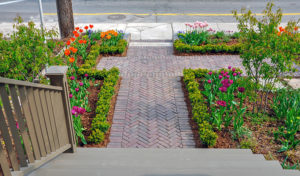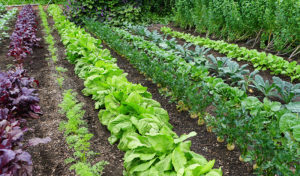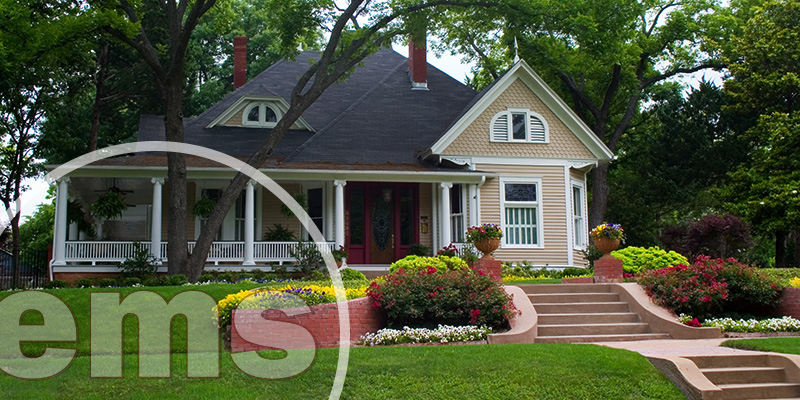Homeowners living in HOA communities should familiarize themselves with the association’s rules — including any HOA gardening rules. This way, they can avoid wasting their time and facing monetary penalties.
The Importance of HOA Gardening Rules
Homeowners associations are known for enforcing strict rules. These rules cover everything from architectural standards to landscaping and gardening. While these rules can feel limiting, they do exist for a good reason. Rules are there to maintain the personality and appearance of a community. When homes look uniform and neat, they collectively increase curb appeal and protect property values.
A common point of contention among homeowners and HOAs, though, is gardens. Many associations have strict HOA gardening rules that residents must follow. At first glance, it doesn’t seem like gardens — flowers or vegetables — would make much of an impact on the appearance of a neighborhood. But, they do come with shortfalls.
First of all, when you view a neighborhood and see a line of bright green lawns, it looks immaculate. When there’s a single front yard with tunnels and protective row covers for the plants, though, it sticks out like a sore thumb. Vegetable plants, in particular, can also appear unkempt. Depending on what plants you have, they can even give off a weed-like appearance.
In addition to appearance, another factor that comes into play is odors. Plants require fertilizers and compost to grow, but these things can give off an unpleasant smell. People also tend to like lawns because they are easy to maintain. In comparison, gardens need a lot of attention and expertise.
Furthermore, vegetable gardens typically attract wildlife. Stray cats, dogs, raccoons, and other critters looking for their next meal can wander into the community. If they find a certain house has plenty to offer right in their front yard, then they are more likely to come back regularly.
Common HOA Gardening Policies
Before you go crazy on your garden, it is essential to check your association’s rules on gardening. You will find these rules written within your governing documents. If you don’t have a copy of these documents on hand, you can always check your community website or ask your HOA board for a copy.
HOA boards, on the other hand, should consider enacting gardening policies if the association doesn’t have them yet. These policies can help regulate and standardize vegetable or flower gardens in the community.
1. Placement
 As explained in the previous section, gardens — especially the food kind — don’t tend to look appealing. Because of this, many associations regulate the placement of gardens. Some HOAs may allow homeowners to dedicate only a small section of the front yard to flower or vegetable plants.
As explained in the previous section, gardens — especially the food kind — don’t tend to look appealing. Because of this, many associations regulate the placement of gardens. Some HOAs may allow homeowners to dedicate only a small section of the front yard to flower or vegetable plants.
Others, though, will want these plants neatly tucked away so that they can’t be viewed from the street. As such, an HOA backyard garden is a more common sight in these communities.
2. Specific Plants Allowed
More detailed governing documents will often list down the types of plants that are allowed in the community. Depending on the HOA, these plants usually conform to a certain color scheme, are low-maintenance, and don’t attract bugs too much. The idea behind this policy is to keep everything looking consistent and avoid invasive plants. Still, every association is different, so it is best to check your rules on it.
3. Limitations on Decorations
 Sometimes, a vegetable or flower garden is not enough. There are homeowners who want to add more decorations in the form of sculptures or furniture. But, as with holiday decorations, lawn decorations are something that homeowners associations also regulate. Again, this circles back around to maintaining the consistent appearance of the neighborhood.
Sometimes, a vegetable or flower garden is not enough. There are homeowners who want to add more decorations in the form of sculptures or furniture. But, as with holiday decorations, lawn decorations are something that homeowners associations also regulate. Again, this circles back around to maintaining the consistent appearance of the neighborhood.
Most of the time, associations don’t permit large or eye-catching sculptures. This is because these sculptures have a tendency to look tacky, and they can block the house behind them.
Apart from large sculptures, homeowners associations also usually prohibit decorations like small fountains and birdbaths. These things are known to attract mosquitoes, which can compromise the health and safety of the residents.
4. Tree Rules
Trees are great — they provide shade and, when properly maintained, can add charm to a property. But, trees can also grow too large that they block a path or a window. They can also become diseased.
Many homeowners associations regulate trees and require that owners trim their trees regularly. This is particularly important before the start of the winter season. Strong winds can easily knock off low-hanging or dead tree branches, bringing property damage and jeopardizing the safety of residents.
On the flip side, some homeowners may want to remove trees for a number of reasons. Before they do, make sure they seek permission from the HOA first. Trees can be very valuable to a community, so if there is no good reason to remove them, it is best not to let homeowners do so.
5. No HOA Food Gardens
 A lot of homeowners have taken to vegetable gardening not only because it is a great hobby but also because it is a sustainable source of food. But, many associations don’t allow owners to have their own personal gardens. Sure, an HOA may allow a couple of herb plants here and there, but full vegetable gardens are typically not allowed.
A lot of homeowners have taken to vegetable gardening not only because it is a great hobby but also because it is a sustainable source of food. But, many associations don’t allow owners to have their own personal gardens. Sure, an HOA may allow a couple of herb plants here and there, but full vegetable gardens are typically not allowed.
This is due to a number of reasons. First of all, vegetable gardens attract wild animals and insects. For a community that values safety, having vegetable gardens can be a risk. Additionally, during the off-season, vegetable gardens would have nothing growing on them, making them bare and unappealing.
Keep in mind, though, that not all HOAs can prohibit personal gardens. For instance, in California, Civil Code Section 4750 protects the right of homeowners to use their backyard for personal agriculture. The section deems any HOA rules that prohibit or unreasonably restrict the use of a homeowner’s backyard for personal agriculture to be void and unenforceable.
A Solution for All: Start an HOA Community Garden
Homeowners who want to start their own garden usually need to seek approval from their HOA board. The exact procedure for this should be outlined in the association’s governing documents.
But, if an HOA doesn’t want to budge on its rule against personal gardens, it may find a compromise by starting its own community garden. A community garden is a common area where homeowners can plant flowers, herbs, and vegetables. Homeowners can buy a plot or section of the garden for their use. Meanwhile, the HOA can hire a professional gardener or landscaper to oversee the project.
For Everyone’s Sake
Gardening can be a fun and fulfilling activity. But, before homeowners start their own personal gardens, it is imperative to understand the HOA gardening rules in their community. These rules exist to keep property values high, so it is in everyone’s best interest to comply with them at all times.
Elite Management Services offers a variety of HOA management solutions to homeowners associations and condominiums. Call us today at (855) 238-8488 or contact us online to learn more about what we do.
RELATED ARTICLES:
- 13 Tips On How To Improve Curb Appeal In Your Community This Spring
- Should The HOA Clubhouse Be Exclusively Used By Homeowners?
- HOA Rules and Regulations: What Homeowners Should Know






